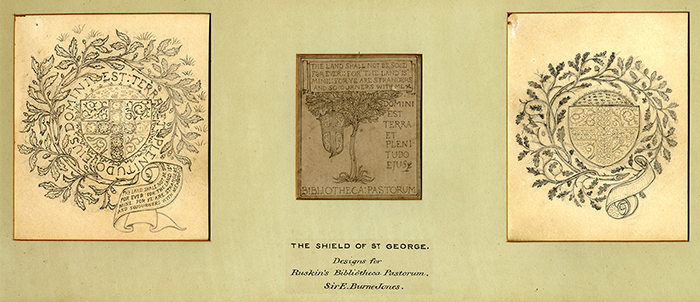
Ruskin and the Decorative Arts
8 October - 22 December 2001
Whilst John Ruskin's writings often reference the practice and principles of good craftsmanship, he also made the common differentiation between the 'fine arts' and the 'lower arts of iron-work, pottery, decorative sculpture, and such like'.
In his teaching, Ruskin argued that to excel in crafts, practical experience was key; he declared that each craft “can only be learned rightly by the experience of years”, and that it was “not so much to be taught as to be felt”. As with drawing, which Ruskin practised and constantly recommended, he thought that “it would be well if all of us were good handicraftsmen in some kind” (The Stones of Venice).

Edward Burne-Jones: Designs for Bibliotheca Pastorum, 1875-6
Ruskin took a leading role in inspiring the generation of artists who initiated the Arts and Crafts movement in the late 1880s. By then, Ruskin was a failing force physically and mentally, but he had already provided direct help to several practical projects, including the revival of the Langdale Linen Industry. His former student at Oxford, Hardwicke Rawnsley, acknowledged his influence in the establishment of a School of Industrial Art at Keswick in 1884, and when Ruskin died in 1900 his coffin was covered with a pall of embroidered Ruskin Lace (now at the Ruskin Museum, Coniston). This exhibition included many examples of crafts influenced by Ruskin.
W.G. Collingwood: Interior, with woman at a spinning wheel, 1880

